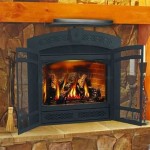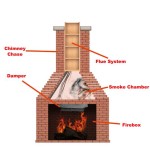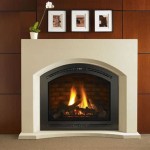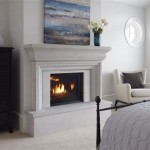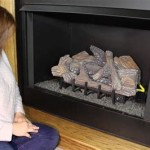Vermont Castings Gas Fireplace Remote Control: Operation, Troubleshooting, and Maintenance
Vermont Castings gas fireplaces offer a combination of aesthetic appeal and efficient heating. A key component of the modern Vermont Castings gas fireplace is often the remote control. This device provides convenience, allowing users to adjust the flame height, temperature, and other settings without needing to manually interact with the fireplace unit itself. Understanding the functionalities, common issues, and proper maintenance of a Vermont Castings gas fireplace remote control is crucial for optimal performance and longevity of the fireplace system.
The remote control communicates with a receiver unit located within the fireplace. This receiver interprets the signals sent from the remote and adjusts the gas valve and other mechanisms to achieve the desired settings. These settings can be adjusted within a range, allowing the user to achieve the desired level of heat and ambiance. The complexity of the remote control systems can vary depending on the model of the fireplace.
Understanding Basic Remote Control Functions
Most Vermont Castings gas fireplace remote controls feature a common set of functionalities. These typically include an On/Off button, flame height adjustment buttons (increase and decrease), a thermostat setting, and potentially a timer function. The On/Off button is self-explanatory, initiating or extinguishing the flame. Flame height adjustment allows users to manage the intensity of the flame and the associated heat output. The thermostat setting enables the fireplace to maintain a pre-determined room temperature by automatically adjusting the flame height. A timer function, if present, allows the fireplace to operate for a specified duration before automatically shutting off.
More advanced remote controls may include additional features such as a fan control, which regulates the speed of a blower fan to circulate warm air throughout the room. They might also offer a child safety lock, preventing unintended operation of the fireplace. Some models also feature a learning function, where the remote can be programmed with custom temperature settings or operating schedules. The specific functions available will always depend on the model and design of the remote control and receiver installed in the fireplace.
Understanding the meaning of the icons and symbols displayed on the remote control screen is critical. These icons provide visual cues regarding the current operating mode, temperature settings, battery level, and any active timer functions. The user manual for the specific fireplace model provides detailed explanations of these icons and their corresponding functions.
Troubleshooting Common Remote Control Problems
Several common issues can affect the functionality of a Vermont Castings gas fireplace remote control. One of the most frequent problems is battery depletion. Replacing the batteries with fresh ones is often the first step in troubleshooting any remote control issue. It's best practice to use high-quality batteries and to replace them periodically, even if the low battery indicator isn't displayed, to prevent corrosion within the remote.
Another common problem is signal interference. Other electronic devices operating on similar frequencies can disrupt the communication between the remote and the receiver. Try moving potential sources of interference, such as cordless phones, Wi-Fi routers, or other remote controls, away from the fireplace area. Re-pairing the remote control to the receiver may also resolve interference issues. This typically involves pressing a specific button sequence on both the remote and the receiver unit, as detailed in the user manual.
If the remote control is unresponsive even after replacing the batteries and addressing potential interference, the issue may lie with the receiver unit. Check the power supply to the receiver. Ensure that it is properly plugged in and that the circuit breaker is not tripped. If the receiver has a reset button, try pressing it to restore the unit to its default settings. If these steps fail to resolve the problem, it may be necessary to contact a qualified service technician to diagnose and repair or replace the receiver unit.
Incorrect settings can also mimic a malfunction. For example, if the thermostat is set too low, the fireplace may not ignite. Ensure that the thermostat is set to a temperature higher than the current room temperature. Similarly, if the timer function is active and set to automatically turn off the fireplace, verify that the timer hasn't expired prematurely. Thoroughly review the remote control settings to ensure that they are configured correctly.
Maintenance and Care for Optimal Performance
Proper maintenance of the Vermont Castings gas fireplace remote control contributes to its longevity and reliable performance. Avoid exposing the remote control to extreme temperatures, humidity, or direct sunlight. These conditions can damage the internal components and shorten the lifespan of the device. Store the remote in a cool, dry place when not in use.
Regularly clean the remote control with a soft, damp cloth. Avoid using harsh chemicals or abrasive cleaners, as these can damage the surface and the buttons. Pay particular attention to cleaning the battery compartment to remove any signs of corrosion. If battery corrosion is present, carefully clean the contacts with a cotton swab dipped in white vinegar or a specialized electronic contact cleaner.
Periodically inspect the remote control for any signs of damage, such as cracks, broken buttons, or a loose battery compartment. If any damage is detected, have the remote repaired or replaced. Attempting to repair the remote control without proper knowledge and tools can further damage the device or create a safety hazard.
When replacing the batteries, ensure that they are inserted with the correct polarity. Incorrect battery insertion can damage the remote control and prevent it from functioning properly. If the remote control will not be used for an extended period, remove the batteries to prevent corrosion. Following these simple maintenance steps can help ensure that the Vermont Castings gas fireplace remote control continues to function reliably for many years.
Consulting the user manual specific to the fireplace model is crucial for understanding any unique features or troubleshooting steps specific to that model. This manual will be the most accurate and comprehensive source of information for operating and maintaining the remote control system.
A Solution For Those Impossible To Get Vermont Castings Remote Controls Hearth Com Forums Home

Vermont Castings Majestic Hand Held Remote Tsfsc Friendly Fires

20002047 Vermont Castings Transmitter Honeywell Remote Vcparts Com

Tsst Touch Screen Thermostatic Remote Ambient Technologies

Vermont Castings Majestic Hand Held Remote Tsfsc Friendly Fires

Vermont Castings Intrepid Gas Stove Mountain Home Center

Vermont Castings Radiance Gas Freestanding Stove Fergus Fireplace

Vermont Castings Radiance Direct Vent Gas Stove Fireside Hearth And Leisure

Sky Tech Thermostatic Remote Control For Gas Stoves Fireplaces Mazzeo S

Amazing Deals And Donations Gas Fireplace Remote Control For Millivolt Valve New
Related Posts




